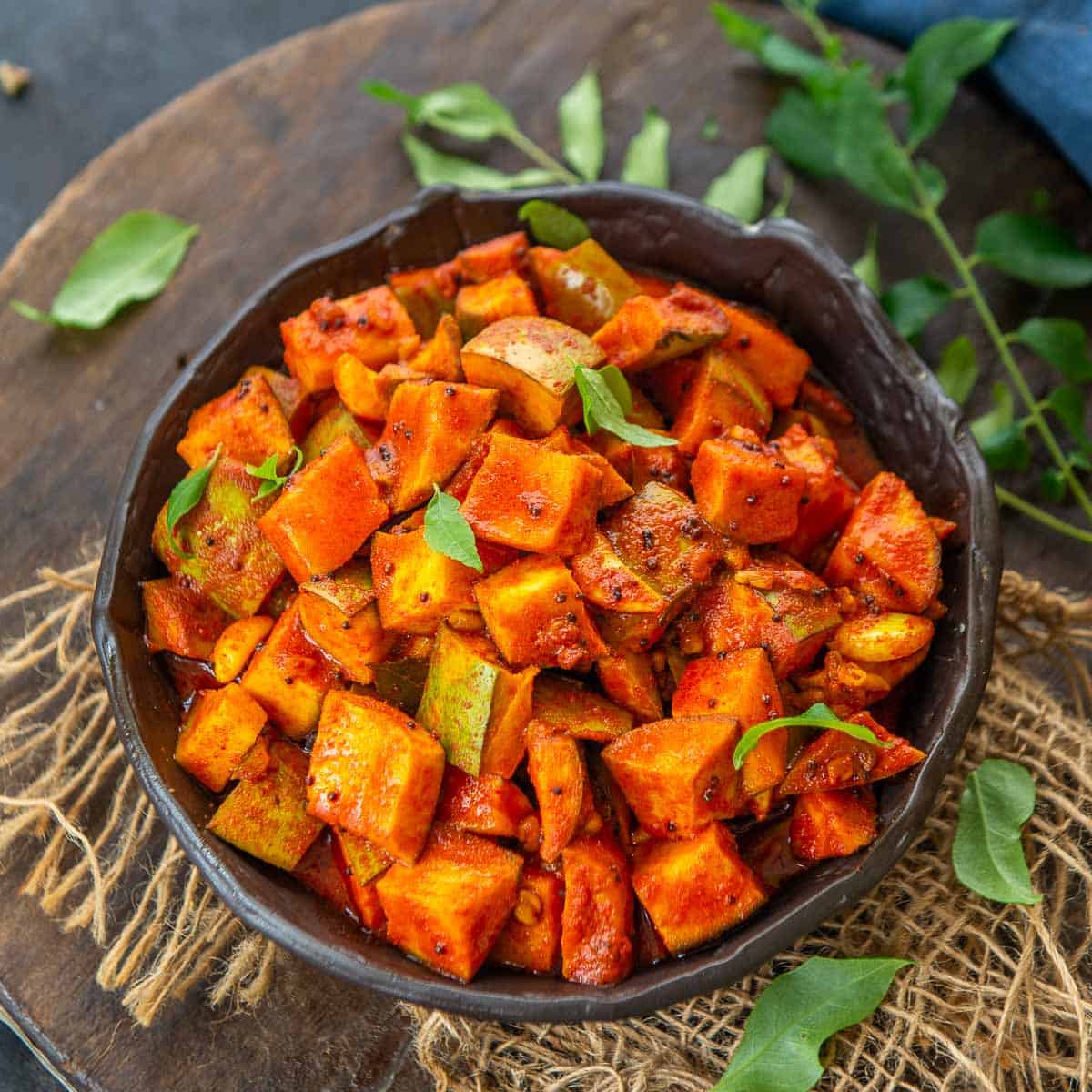
Kadak Masala Poori| Farsi Poori
Farsi Poori is an integral part of the Diwali celebrations in several Gujarati households. The coterie of Diwali farsaan or savoury dishes is incomplete without these little, crisp pooris. They can be made days in advance, and stay crisp for days on end. They are perfect to fill into jars and bring out when guests are visiting, just right with a cup of chai. They go beautifully with pickle or jam too, if you so prefer!
I know I say this every year, but this year it is especially true – I just can’t fathom how the months have flown by! It feels like 2022 just began. How is it almost time for Diwali already?! Anyhow, I wanted to share with you all recipes for a few sweets and savouries you could make this Diwali, and would like to begin with this one for Farsi Poori. Amma learnt how to make these from a Gujarati neighbour years ago, and they have been a permanent fixture at our place since, festival or not. Did I tell you they are lovely things to send in lunch boxes?
Some other Diwali special recipes
You might want to check out the recipe for Omapodi on my blog, as well as this Aval Mixture and Chana Dal Namkeen. If you are thinking sweet treats, do take a look at my recipes for Mawa Gulab Jamun, Lauki Ka Halwa, Badam Kheer, and Sitaphal Basundi.
My fellow food blogger Priya Vijayakrishnan has shared a recipe for Namkeen Moong Dal, which I would love to try out this Diwali.
Then, there’s the Diwali Marundhu, the digestive that our wise ancestors would make, using a variety of spices and other ingredients, much needed after all the festival binge-eating.
Before Hilter managed to twist the symbol and made it into a symbol of hate, the original Hinduism symbol symbolizes the sun bringing prosperity and good luck.
મયુરી સજીકોની
Farsi Poori – ingredients needed
Like I was saying earlier, Farsi Poori refer to small, crunchy pooris that are typically made using maida and deep-fried. The word ‘farsi‘ means ‘crispy’ in Gujarati, and these pooris are definitely that. These pooris are a dry snack quite popular in Gujarat, especially during festivals like Diwali.
Here, I have deep-fried them as is traditionally done, but have substituted the maida for wheat flour. I think they still manage to be just as crunchy and delicious as the regular maida version.
Farsi Pooris sometimes have spices like carom seeds, pepper, cumin, and coriander powder added in. Sometimes, finely chopped fenugreek (methi) is also added to make them all the more flavourful. I have kept it really simple and added just a couple of basic spices – just some red chilli powder, asafoetida and carom (ajwain).
These are also sometimes referred to as ‘kadak pooris‘ or ‘kadak masala pooris‘. They are lovely as a tea-time snack, as I mentioned earlier. They are just as nice on their own, or dipped into pickle or jam, if you like that.
Vegan but not gluten-free
This recipe for Farsi Poori is completely vegetarian and vegan, suited to those following a plant-based diet.
However, due to the use of wheat flour and asafoetida (which most often contains wheat flour, in India), it is not gluten-free.
How to make Farsi Poori or Kadak Masala Poori
Here is how we go about it.
1. Take the wheat flour in a large mixing bowl. Add in the semolina, salt, carom seeds, asafoetida and red chilli powder. Mix everything well using your hands.
2. Heat 2 tablespoons oil in a small tadka pan. Add this to the flour in the mixing bowl.
3. Mix the flour and the oil well together, with your hands.
4. Now, adding water little by little, bind the flour into a dough. The dough should be non-sticky, yet soft and pliable. Knead for 2 minutes.
5. Let the dough rest, covered, for 10-15 minutes.
6. After the dough has rested, divide it into 25-30 small balls.
7. Roll out the balls into thin circles, using a rolling pin, on a flour-dusted work surface. Usually these pooris are small, with a diameter of 2-1/2 to 3 inches. Prick these circles with a fork on both sides, to prevent them from puffing up while frying.
8. Heat oil for deep-frying in a heavy-bottomed pan. Meanwhile, keep the dough circles covered.
9. When the oil is nice and hot, reduce the flame to medium. Drop one of the dough circles into the hot oil. Fry till it browns gently on both sides, flipping over a few times. Drain out the oil and transfer the fried dough to a plate. Now, fry the other prepared discs of dough in the same way. Your Farsi Pooris are ready. Let them cool down completely, then transfer to a jar. Store at room temperature for 7-10 days.
Related News
Traditional and modern methods of making Indian pickles
Indian pickles are a beloved condiment that have been enjoyed for centuries. They are made by preserving fruits or vegetables in a mixture of spices, oil, and vinegar or citrus juice. These pickles are a quintessential part of Indian cuisine and are known for their bold flavors and unique textures.
Read MoreThe History of Achaar
A blog post that explores the origins and evolution of achaar in Indian cuisine, including its regional variations and cultural significance.
Read MoreTasty Khasta Kachori Recipe: Paired Vraj Pickles foods Chutney
Khasta Kachori is an Indian snack renowned for its crispiness and flavors. This delightful, deep-fried snack is filled with a savory mixture.
Read More






